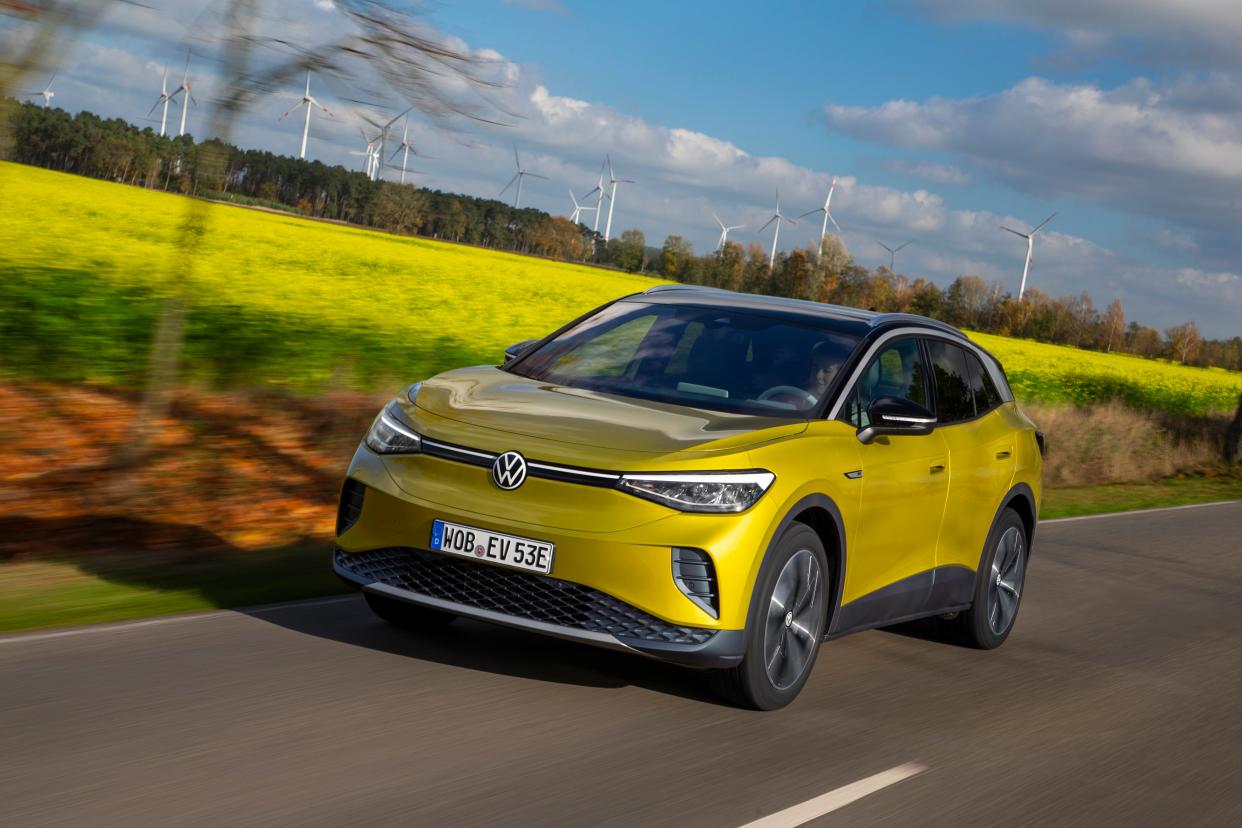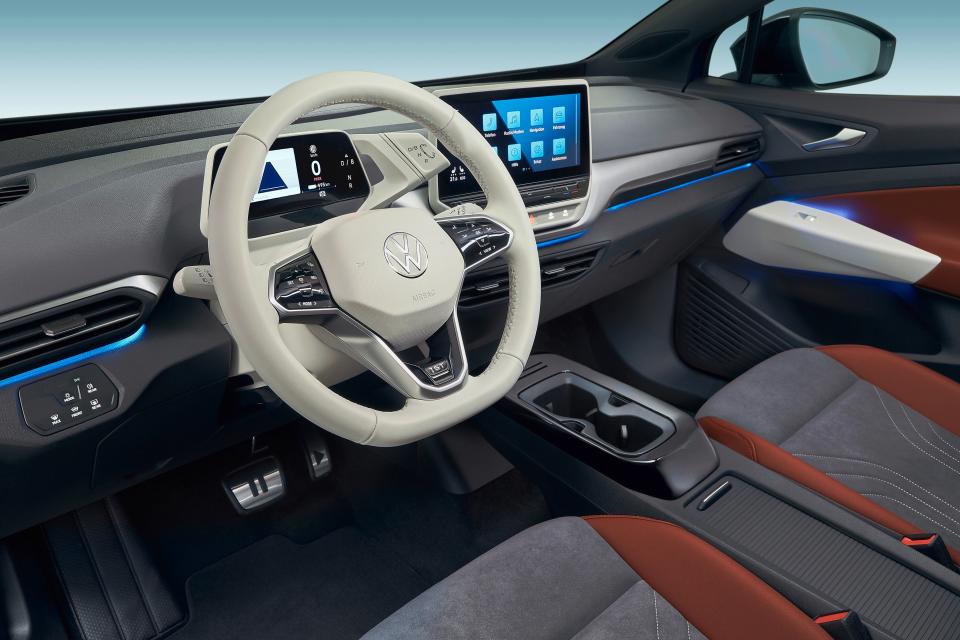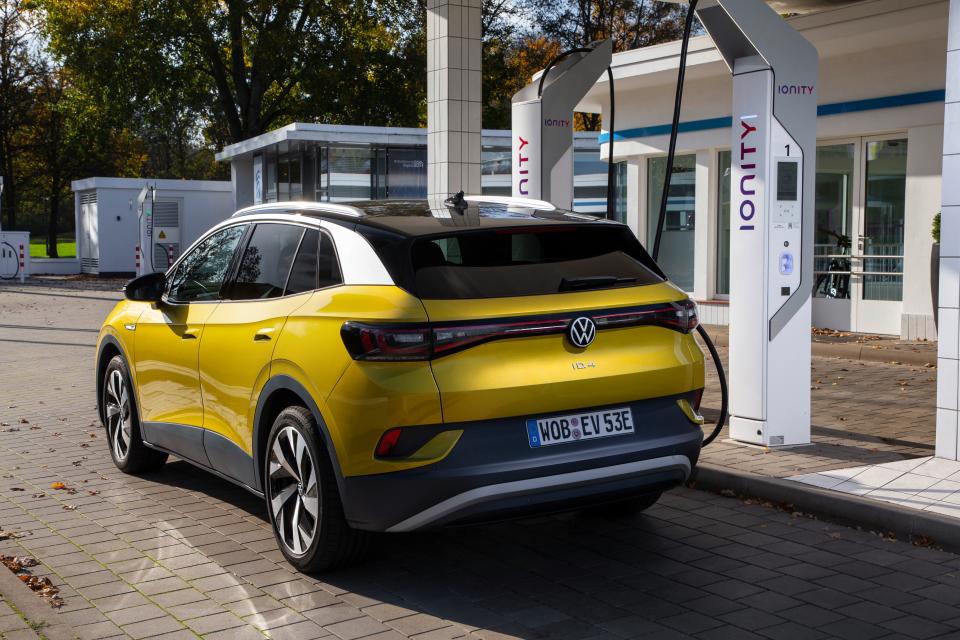Volkswagen ID.4: God himself might be interested in this all-electric VW

According to the website catholic.org, penance is defined as “contrition, a clear and decisive rejection of the sin committed, together with a resolution not to commit it again, out of the love one has for God and which is reborn with repentance. The resolution to avoid committing these sins in the future is a sure sign that your sorrow is genuine and authentic. This does not mean that a promise never to fall again into sin is necessary. A resolution to try to avoid the near occasions of sin suffices for true repentance. God’s grace in cooperation with the intention to rectify your life will give you the strength to resist and overcome temptation in the future.”
I think it is fair to say that Volkswagen Group’s current conversion to the electric car – a promise to build some 1.5 million by 2025 and 22 million by 2030 – can be seen as an act of penance for the great sin of dieselgate. The company says that its electric cars will be “net climate neutral” products, that is taking into account the supply chain (especially making and shifting all those lithium ion and cobalt batteries) and the energy expended in production and distribution. It will be independently audited by TUV Nord, the technical service provider, and not (presumably) fiddled.

Sounds hopeful, but there is a lot to live down, and sponsoring the Euros is only one of the many things VW is having to do to bleach its reputation clean. I’m not sure what car God drives, but if he followed all the official and industry advice a few years ago, as so many did, he might have got himself into a VW Passat TDI, the kind of car the almighty would probably go for, in SE trim – but only to find later that he’d been conned by the COs emissions figures. His anger would be righteous, and he’d probably go for the Kia next time.
But maybe not. Maybe he’d be interested in the new, all-electric battery-powered ID.4, the second of the new line of VW-badged cars. The first was the very appealing ID.3, the Golf alternative that looks enough like a Golf to make you think it’s a VW, but different enough to suggest it’s doing something a bit different. The ID.4 is the ID.3’s stretched, bulkier bigger sibling. It’s a compact SUV, if you will, though there’s no off-road capability (a four-wheel drive version comes later but it’s not really for rough terrain). In due course there’ll also be the offer of a cheaper version with a smaller range (200 or so miles against the launch model’s 250 to 300 miles).
In essence, the ID.4 is less of a car and more of a living room on wheels. And a very finely appointed living room it is, too. Unlike the traditional sombre black and grey of past VWs, the ID.3 and ID.4 are light and bright, soft pastel shades and soft surfaces, and in their quiet way, revolutionary. There’s no parking brake any more (you have to dig deep in the menus to find such a thing) and the automatic-only controls for the transmission have been promoted from a stick on the floor to a little lever to the right and above the steering wheel, and they work surprisingly well.
It’s keyless entry and ignition and it naturally has all the semi-autonomous driving aids customers expect these days – adjustable cruise control, lane “assist” (where it will correct the steering if you ever drift out of lane), plus the ability (one day) to “talk” to other vehicles and the road infrastructure (say, warning about hazards nearby). It even makes a special car-like noise to alert other road users as to your otherwise silent presence. The small dashboard screen has the minimum of information, when I’d have preferred a bit more. The larger infotainment and control screen (10 inch diameter) is one of the new VW Group designs, with sliders of the heating controls. Stationary it works really well, but on the move very much less so. Though it’s a bit extreme, I’d even say it was borderline dangerous, though the handy button controls on the steering wheel should keep you out of trouble. A few old fashioned “short cut” buttons would help the driver concentrate better on the road.
THE SPEC
Volkswagen ID.4 1st Edition Pro Performance
Price: £40,100
Engine: 77kWh batteries, 2WD, auto
Power: 208PS
Top speed: 99mph
0-60mph: 8.5 secs
Fuel economy: 161mpg equiv
CO2 emissions: nil
Like all electric cars, the ID.4 will give a jolt if you slam your foot on the accelerator at takeoff, but it mostly copes with the burst of power. As you gain speed the acceleration grows less dramatic, and it’s 8.5 seconds before you hit 60mph; top speed is kept under the ton, which helps the batteries preserve their charge. For the ID.4 is a very heavy thing, even by bloated modern car standards, at 2.1 tonnes and requires a lot of battery charge to give it its real world range of about 250 to 300 miles (depending on the temperature, style of driving, etc). That should allay any range anxiety, and if you’re on a long journey it’ll take about 40 minutes to recharge after that first run, by which time you should be taking a break anyway.
It’s a lovely place to be in, the future, and the cabin is thoroughly tasteful and contemporary; but the ID.4 is far from lovely to look at, with its slabby sides and rather nondescript lines. It also feels heavy to drive, in a way some electric cars avoid (such as the new, light Fiat 500 electric).

As an act of penance for dieselgate, then, the VW ID.4 is certainly an acceptable offering. There are in-house group rivals to the ID.3 and ID.4, such as the Audi e-tron (a little more expensive and conventional), the Skoda Enyaq and forthcoming Seat el-Born, but the Koreans still have the best blend of capability and value. As I say, I’d tell God to buy a Kia e-Niro, and if you wait a little longer you could find yourself impressed by the new Hyundai Ionia 5 and Nissan Ariya, which make the ID.4 seem rather old hat. The entry level electric Citroen e-C4, is also worth a look, as it comes in below the government’s new £35,000 list price threshold for the zero emissions car subsidy. Other rivals include the Polestar 2, and of course the Tesla 3.
Electric cars are advancing in ways that are quite astonishing, thanks to companies such as VW meeting the challenge of official targets for planning out petrol and diesel sales, but there’s still a cost for you – the extra £10,000 or so you’ll pay for an electric model over its internal combustion equivalent. That’s your penance, as it happens.
Read More
Car review: The Ford EcoSport doesn’t really live up to initial impressions
Car review: A funky electric newcomer, but ‘range anxiety’ may pull the plug on the Mazda MX-30

